
The Clans of the Hebrides
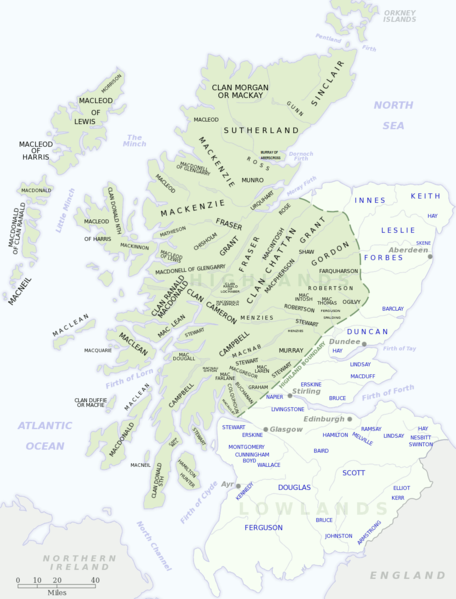
The Hebrides have been shown to have been inhabited as far back as 6500 BC. There are countless archaelogical sites throughout the islands that provide evidence of thriving communities in the Inner and Outer Hebrides. It follows logically that the Hebrides have a fascinating and complicated history. Prior to Viking rule which began in the late 8th century, the Hebrides were divided by north and south. The southern Hebrides were a part of the Gaelic kingdom of Dál Riata, which included parts of western Scotland and northeastern Ireland as well as Mull, Iona, Jura and Islay. To the north and west, the other islands of the Hebrides were controlled by the Picts. Of course the borders would change through battle and conquest and Dál Riata expanded northward and southward at its peak.
Beginning in the late 8th century, the Norse began infiltrating the area and the Kingdom of the Isles was established by Ketil Flatnose who was sent by Harald Fairhair, the King of Norway. The Kingdom of the Isles included what was known as the Southern Isles. The Hebrides, the Isles of Man, Firth and Clyde were a part of it. The Orkney and Shetland Islands were known as the Northern Isles. Although the Viking rule lasted for 400 years, there is surprisingly little that endures from that era other than some of the place names. Travel reports during the 13th Century advised not to visit the area due to the “dangerous inhabitants, incomprehensible language and bad weather”.
With the signing of the Treaty of Perth in 1266, the islands became part of Scotland and the islands were in large part controlled by the clans.
The word ‘clan’ in Gaelic refers to children or family. This is somewhat misleading because members of the Scottish clans were not always blood relatives. Labourers under the protection of a clan would take on the clan name. The clan chiefs who had authority and power over their lands could add or ban citizens from the clan. Some clans claim origins from mythological characters, but nearly all have a combination of Norse and Gaelic lineage.

Clan MacDonald
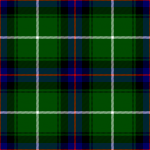
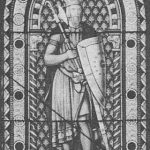
The MacDonalds were known as the Lords of the Isles. The Clan Castles include Loch Finlaggan on Islay, the main stronghold, Armadale Castle on Skye, which now houses the Museum of the Isles and the Clan Donald Centre, and the ruins of Dunscaith Castle at Sleat on the Isle of Skye. The powerful MacDonalds were descendants of Somerled, a Celtic warrior King born in 1113. Although he was half Norse and married the daughter of a Norse king, he defeated the Vikings, freeing the area from Norse rule. Somerled built a strong fleet which captured many Viking ships. He supposedly was also the inventor of the steerable rudder, which gave him and his men a great advantage on the waters. The MacDonalds built a huge empire by 1160 and were regarded as rulers of the seas for around 400 years. There are multiple branches of the MacDonald Clan and there are said to be about 500,000 people alive today who are descended from Somerled, making him second only to Genghis Khan in terms of number of descendants.

Clan MacLeod
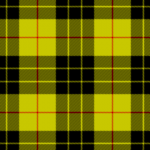
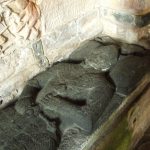
The MacLeod Clan historically had two branches, the MacLeods of Harris and Dunvegan and the MacLeods of Lewis. Leod is a Norse nickname for ugly. The original Leod was a descendant of the Norse king Olaf the Black. Leod’s sons Tormod and Torquil became lords of Harris and Dunvegan and Lewis respectively, although the MacLeods of Lewis lost influence to the MacKenzies in the 16th and 17th centuries. The MacLeods also had influence on Skye and North Uist. The clan castle, Dunvegan, the stronghold of the MacLeods for 800 years, is the oldest continuously inhabited castle in Scotland.
Both branches of the MacLeods were supporters of the MacDonald Clan until 1493 when the MacDonalds lost lordship of the isles, at which point the clans began feuding with each other causing a period of bloody anarchy in the Hebrides. Alisdair Crotach (hunchback in Gaelic) was the eighth chief of the Harris led clan. He is known for the massacre of 395 MacDonalds on the Isle of Eigg. In spite of this, he was a religious man who finished his life as a monk on Harris. Under his rule, music, dancing and poetry flourished. The MacCrimmons were a family of pipers who have been ‘masters of the pipes’ to the MacCleod chiefs for centuries. The tradition continued in the 20th century with two MacCrimmons being instated as official pipers.
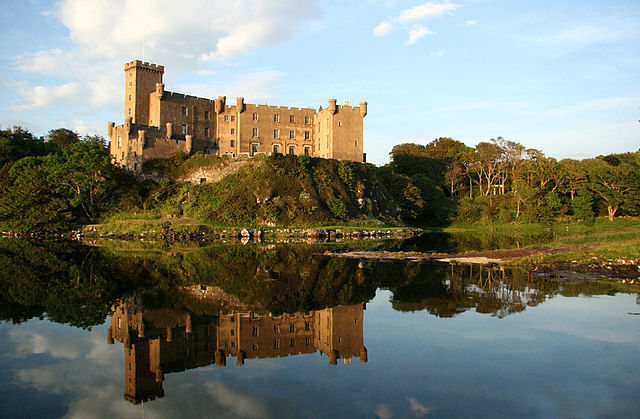
Clan MacLean
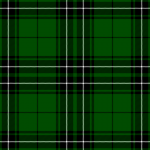
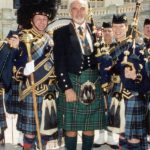
The territory of the MacLean Clan includes the isles of Mull and Coll. Duart Castle, which was rebuilt at the beginning of the 20th century by Sir Fitzroy MacLean, is the historical stronghold of the clan. It is located on the Isle of Mull and clan chiefs continue to reside there since the renovation.
The MacLean Clan is one of the oldest. The MacLeans were regarded historically as skilled warriors. Their founder is Gilleain na Tuaighe, or Gilleain of the Battle Axe, who lived in the 13th century. In the 16th century, Lachlan MacLean fought against the MacDonalds at Islay and was killed in battle. In retaliation, his sons sought revenge in a three day massacre against the people of Islay.
The MacLeans went on to fight for Elizabeth I of England. Their skill in battle won them substantial financial rewards for fighting for the Queen in Ireland. They also became involved in helping a galleon of the Spanish Armada which Philip of Spain had launched against Queen Elizabeth. Lachlan Mor agreed to help the Spanish if they would join the MacLeans in battle against their rivals. The galleon, however, was blown up in Tobermory Bay by and English spy. Later on, the MacLeans were outwitted by Clan Campbell in the courts, causing substantial losses of their territory.
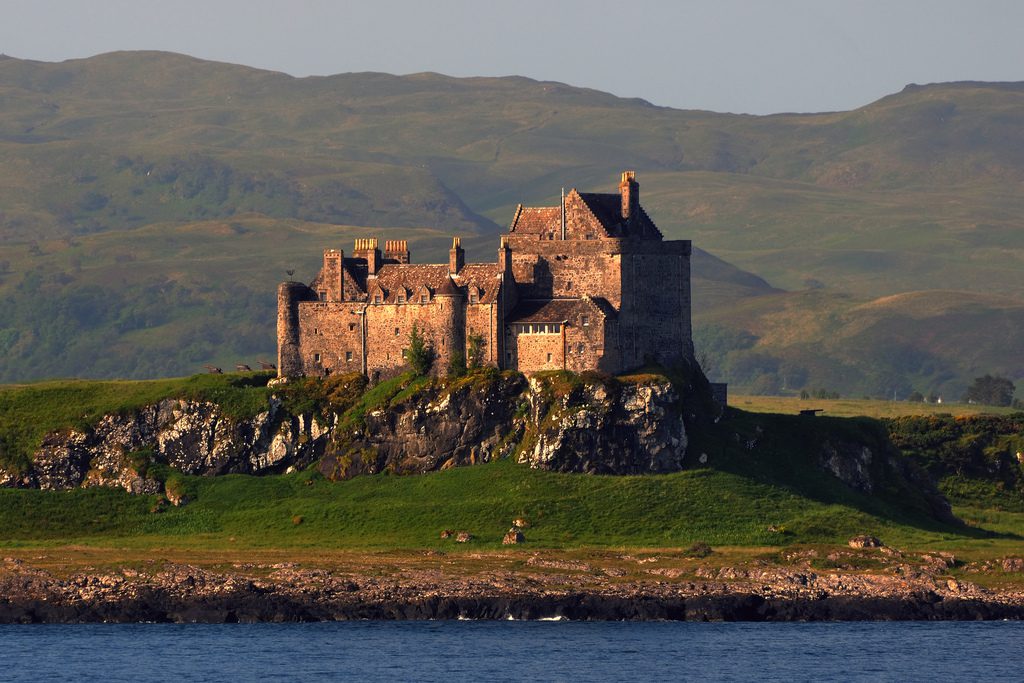
Clan MacKenzie
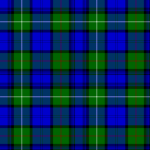

At one time, the MacKenzie Clan were the fourth most powerful of the clans and controlled land from the Isle of Lewis to the mainland. The founding clan chief, Colin Fitzgerald, was known as Caberfeidh, meaning deer’s antlers. He is said to have saved King Alexander III from an attacking stag by spearing the beast through the head. The King rewarded him greatly by giving him a significant amount of land. The ambitious MacKenzies were royal agents for a series of Scottish kings. During the 1600’s, when Lewis was in chaos, King James VI, who had a dislike for the Gaelic culture, regarding its representatives as mad and barbarous, felt himself forced to use clansmen to exercise some authority over the situation. As a result, Colin MacKenzie invaded Lewis with 700 men to seize the land from the MacLeods. The MacLeods retreated to the Isle of Berneray. The MacKenzies captured a great number of women and children as they fled and herded them to a rocky island, abandoning them to the incoming tide. This left the MacLeods with no choice but to surrender or lose their women and children. As a result, they lost their claims to the Isle of Lewis.
In 1815, the direct male line of the MacKenzies became extinct with the death of Francis MacKenzie Humberston. Two centuries earlier, the Brahan Seer foretold that the last of the MacKenzie clan chiefs would die a deaf mute. Francis outlived all four of his sons before scarlet fever caused him to become deaf and blind, thus fulfilling the prophecy. The descendants of the MacKenzies thereafter had to claim their name and title through maternal lineage.
The MacKenzies were loyal to the Stuart monarchy, supporting Mary, Queen of Scots. They eventually became British aristocrats.
Clan MacNeil
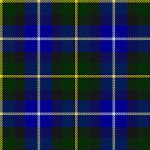
The territory of the MacNeils includes the Isles of Barra, Sanday, Mingulay, Berneray, Gigha and Colonsay. The historic seat of the MacNeils is the 14th century Kisimul Castle, which was restored in the early 20th century. The MacNeils were a mix of Celtic and Norse. They were known as seamen and pirates, distinguished by their Birlinn, a more sophisticated variation of the Viking longboat. The first Viking on Barra was Omund the Wooden Leg. The MacNeils have claimed to be descended, however, from Niall of the Nine Hostages, an Irish King. A DNA project has recently proven this to be false. For centuries, the MacNeils raided the seas from their base at Kisimul Castle on Barra. Perhaps this is a sign that they might look toward a more Viking origin. Overall, the history of the MacNeils is quite obscure, although they did become quite a force to be reckoned with and even attacked the Royal Navy under Roderick MacNeil during the reign of James VI.
In 1838, after much hardship, resulting in mass emigration from Barra, Clan Chief Roderick, the 21st clan chief, was forced to sell Barra.
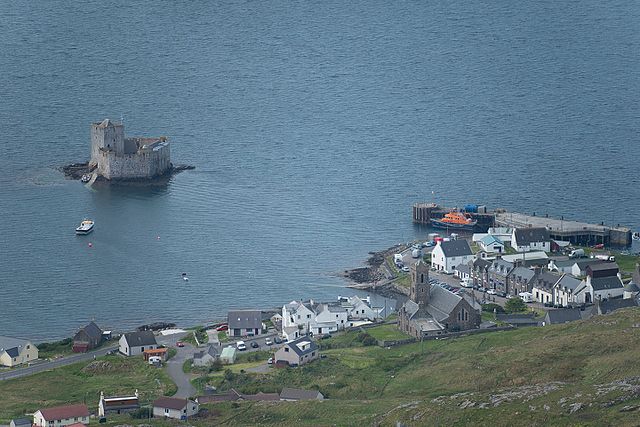
Over the last couple centuries, the Hebrides have gone through periods of both growth and decline. Some of the smaller islands are no longer inhabited. Life has definitely changed, but the clans continue to live on. Instead of leading men into battle against other clans, the clan chiefs are now bankers, businessmen and restaurant owners.
29 thoughts on “The Clans of the Hebrides”
You forgot Clan Mackinnon
Thank you for pointing that out! Clan Mackinnon should definitely be included. It has been a while since I put that post together, so I am not sure why it got left out. I’ll look in my notes and plan to do a revision in the near future!
Thanks for visiting my site!
John
Which clan did the McCallions fall under?
Hi Kevin,
I have been trying to find a connection of the McCallion name to the Hebrides clans in my article. From what I have been able to find, the McCallions originated in or near Shropshire County in central England. Many of them moved to Ireland and it seems the name is more common there. There are some in Scotland, too but I haven’t seen a connection to the Hebrides clans.
Good evening to all, Orkney the Island for me, so said my Mother! I am guessing the people of Orkney reminded her of me! My Grandmother’s people came from the Islands to the New World, around 1640. All of my siblings worn Harris Tweed growing up,y Grandmother made sure we were dressed proper! She came from a reformed Scottish family who settled in Northern New Jersey and married into a Dutch reformed family. I believe they settled on the Methodist Church. But, I do remember searching the grave yard at the still standing Trinity Church in Manhattan NYC for the family names! Confusing when no one writes it down and it is given to the Grandchildren by storytelling! ? My Mother continued the storytelling until the day she died at 85, 12/30/09. I will come visit in the future and may want to to be buried at Sea there, going back to the Homeland has intriqued me for many moons! Keep doing what you do, and I hope to meet you some day! My regards, CC
Hi Carol,
I enjoyed reading your comment. It’s so fun to hear about people’s connections to the various islands we explore on this site. As a musician living in Manhattan, I also had close connections to Trinity Church. Hope you enjoy my site!
Best wishes,
John
John,
My grandmother was a Mckeeg. We have traced the line to William Mckeeg who fetched up in essex in 1720 to marry Anne, surname unknown. Through other members of our family we have heard that the family came from Maryhill near Glasgow. I cannot find any trace of the family name in that area, there are however quite a few McCaig. Who appear to be from the Hebrides. Is it a name that may be connected to the islands?
Hello Duncan,
I poked around a bit on the internet and found the following. McKeeg is a sept, or branch of Clan Macleod, who fought against Clan MacDonald on the Isle of Jura for control of the islands. Check out macaodhagain.weebly.com. I see a reference to McCaig at Oban, considered to be the gateway to the Hebrides, but on the mainland. Its interesting stuff!
Were there any McAuley’s on the Hebrides? I’ve been told there were.
Hello Joanna,
From what I’ve been able to find, it seems there was a family of Macaulays on the Isle of Lewis in the Outer Hebrides. They were not, however, connected to the MacAulay clan from the mainland and may have been of Irish origin.
Just what I found out from a quick search, but kind of interesting.
Thanks for writing!
John
The MacAulays of the Hebrides are a varied group and the results of DNA testing have shown a lot of MacAulays that are unrelated to each other. Some likely result from the Vikings, but some, including my family, were originally from Ireland. The MacAulays were an important clan and have many skirmishes with the Morrisons. They should have their own section!
Thank you for writing! It has definitely been interesting and a lot of fun learning about all these clans. When I get back to working on this site, I may have to do a follow up post on everything I’ve learned!
Do you have more information on Ketil Flatnose who was sent by Harald Fairhair, the King of Norway
Thank you for writing Philip!
Most of the information I can find on the internet is related to the series ‘Vikings’. Maybe you have watched it. Other info is kind of sparse and contradictory. Here is a link to what I found most helpful: http://tng.famille-morin.com/getperson.php?personID=I6000000001169157385&tree=Ross
You will need to scroll down further to find the English text.
Very interesting topic and great question. Thanks for visiting my site!
John
Your credibility is utterly destroyed by the omission of any reference to the great Clan Morrison!
Hello John!
You are correct that I am no expert on this subject. I have been poking around trying to find out more about the Morrisons and came across the following:
https://www.electricscotland.com/webclans/m/morriso2.html
Be sure to read the paragraph The Fictional Origin. I am wondering what your thoughts are. Perhaps you know more. The Morrison Clan is definitely very interesting!
Best wishes,
John
Hello from Canada!
I am married to a Sargeant, apparently from England and Scotland. Our 27 yr old redhead daughter “feels strongly” she is of Scottish decent. We all toured Scotland in Sept 2019 and she said she felt she had come home… I have been researching and find almost nothing of the name Sargeant in Scotland. I think the name started in England and possibly emigrated to Ireland, but cannot find anything actually in Scotland. Is there anything you know about this name? I appreciate any leads or suggestions. Much thanks.
Hi Illona,
This is a tough one. It seems that the origins are English and there was a significant migration to Ireland, as well as Australia, New Zealand, etc. I can’t find any information on a significant migration to Scotland, although there are genealogical records in the search results that mention Sergeants from Edinburgh. For instance Jonathan Sargeant (c.1615-c.1652). It seems like a real possibility that you may be able to trace Scottish roots through genealogical records, etc. I didn’t come across anything in my research that indicates a connection to the Hebrides.
Good luck!
John
The McLeods have an archivist (whom I have met) based in the Isles of Skye, and Lewis and Harris. He knew my McLeod and MacDonald connections off the top of his head. But he made it clear that he did not do ancestry tracing.
What tosh. No anywhere near accurate article on the clans that were basic to the history of Scotland and Ireland and the Inner Hebrides would leave out the MacDougalls – the original Lords of Lorne and the Isles; whose descent from Somerled is recorded in at least as great a detail as the MacDonalds, who were brothers. Dugald and Donald; sons of Somerled. If this is an oversight it is difficult to understand exactly how. I wonder what part prejudices or preferences play in these histories. Thank you for allowing me to comment. I am distant but I do bear the honorable name of McDougald. I dont mind speaking for myself and those who have gone before.
Hi Michael,
I have been trying to follow up on the MacDougalls. Definitely interesting reading and it is clear that they possessed land in the Hebrides and played a major role in defeating the Vikings, thereby claiming the islands for Scotland.
Most of my sources classify the MacDougalls as a Highland clan, with their seat at Dunollie Castle near Oban in the Argyll region of the Scottish Highlands. It has been some time now, since I wrote this article, but it is likely due to this classification that I skipped over the MacDougalls in my article about the Hebrides. My apologies! I have researched and written on a wide variety of topics on this website, and this article continues to be the most popular.
Halo.
I am looking for information of the McCall clan. My grandmother remembers that we had a link to the Isle of Lewis but I can not seem to find a link with the McCall name.
Tapaph leibh,
Cora May
Hi Cora May,
I would start by looking at Clan McDonald. I have seen references that indicate Clan McCall were a subclan of the McDonald clan. Other than the McDonald connection, it seems that the McCalls were at home on the Western coast of Scotland in an area called Argyle or Argyllshire.
Don’t know if this helps. Thanks for writing!
John
I’m interested in what clan was dominant on Easdale Island. My Great Grandfather was from Easdale.
No MacPhees????
Hi Jessie,
This clan has a very interesting history. I found it described as a Highlands clan in my initial research, but it seems that the ancestral home of the McPhees, or Macfies, was the islands of Colonsay and Oronsay in the Inner Hebrides. They had close ties to Clan MacDonald and joined with them when their last chief was executed in the early 1600s, at which point they lost control of the islands. There are some colorful characters whose stories make for interesting reading. Ewan Macphee, for example. The Clan Macfie page on Wikipedia has a lot of interesting information if you haven’t seen it.
Thanks for your comment!
John
There were McEacherns and McCallums, too. A good many of whom set sail for Upper Canada/ Canada West in the early 1800s. In Eldon Township, Victoria Co, in what became Ontario a quarter of the population was said to bear the surname McEachern. I’ve been researching a John McCallum, “yeoman of Islay,” who petitioned for land in 1847-48. That land was farmed by his descendants till c 1912-13.
Thank you Cait. It’s fun researching these things. Hope you enjoyed the site!
John
I am told that my forbear McNeil came from Isle of Barra was as piper and a pirate he would have landed in northern Ireland and then moved down into County Mayo adding a y to the McNeil becoming McNealy but I do not know the first name of him to find out when he left Barra